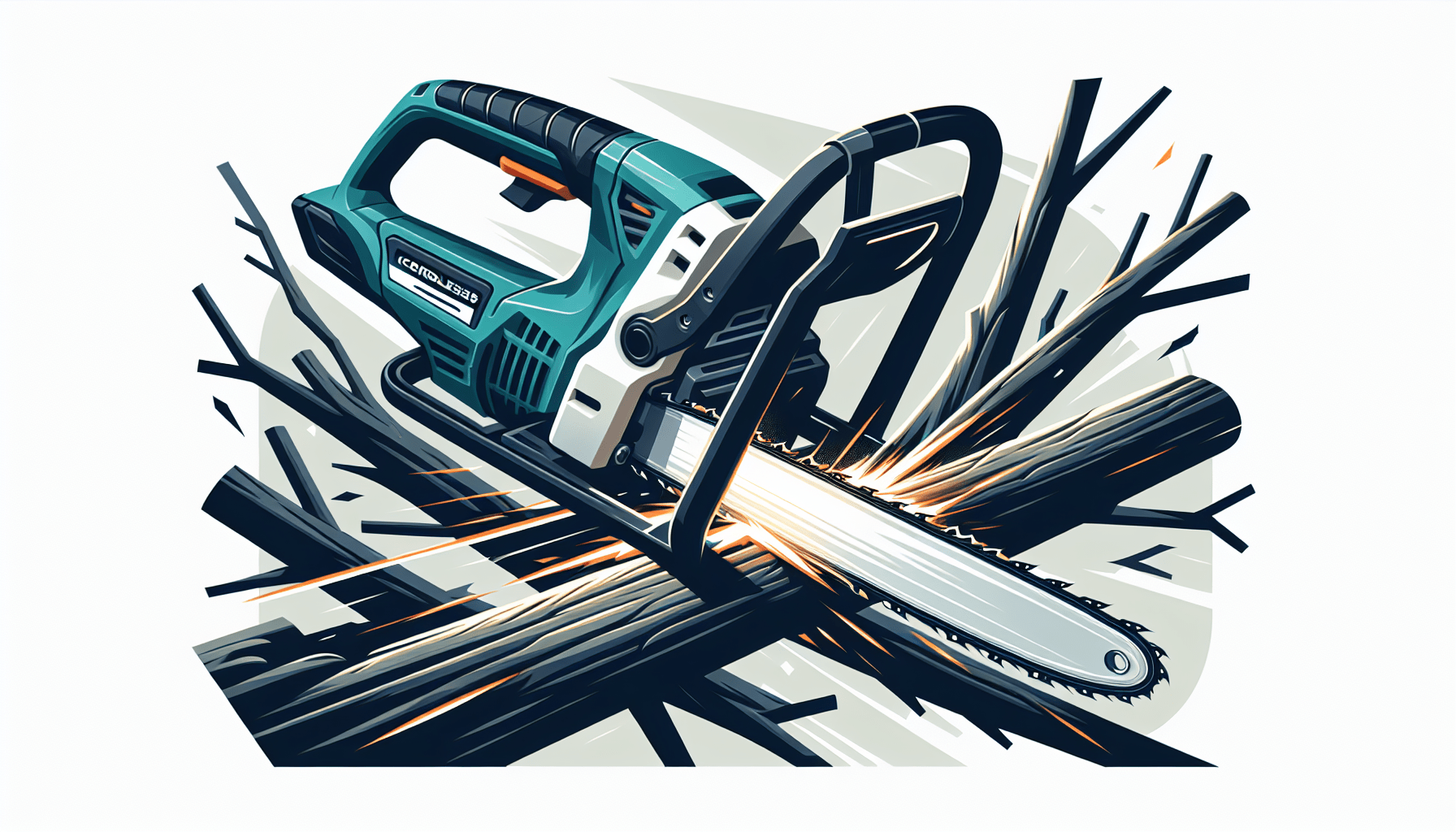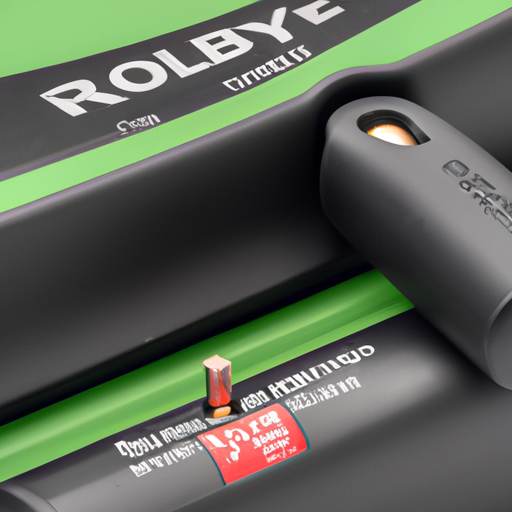When it comes to trimming trees or cutting branches, an electric pole saw can be a handy tool to have. But have you ever wondered just how thick of a branch it can handle? Well, the answer may surprise you. With its powerful motor and razor-sharp blades, an electric pole saw has the capability to effortlessly cut through branches as thick as 6 inches in diameter. So whether you’re a professional arborist or simply want to keep your backyard neat and tidy, an electric pole saw might just be the perfect tool for the job.
Understanding Electric Pole Saws
Electric pole saws are versatile and convenient tools that make tree pruning and trimming much easier and more efficient. Whether you have a small backyard or a large garden, an electric pole saw can help you maintain your trees and shrubs with ease. In this article, we will explore the different aspects of electric pole saws, from what they are and how they work, to the key features that you should consider when purchasing one.
What is an Electric Pole Saw?
An electric pole saw is a specialized cutting tool that combines the functionality of a chainsaw with an extendable pole. This design allows the user to reach high branches and limbs without the need for a ladder or climbing. With an electric pole saw, you can safely trim branches from the ground, reducing the risk of accidents and injuries. These saws are commonly powered by electricity, making them suitable for residential use, as they are quieter and more environmentally friendly compared to gas-powered alternatives.
How Does an Electric Pole Saw Work?
Electric pole saws work by utilizing a motor and a chainsaw blade at the end of an extendable pole. When you activate the motor, it spins the chain around the guide bar, creating a cutting motion. The extendable pole allows you to reach higher branches, and some models even come with adjustable angles to make cutting in different directions easier. Additionally, electric pole saws typically have a safety switch to prevent accidental startups and a chain brake system for added safety during operation.
Key Features of Electric Pole Saws
When choosing an electric pole saw, there are several key features that you should consider. Understanding these features will help you make an informed decision and ensure that the saw meets your specific needs.
Factors Determining Cutting Thickness
The cutting thickness of an electric pole saw is influenced by several factors, including power and motor strength, saw bar length and design, chain specifications, branch density and hardness, as well as cutting techniques and safety measures.
Power and Motor Strength
The power output and motor strength of an electric pole saw play a crucial role in determining its cutting thickness. The higher the power output, the more force the saw can generate, allowing it to cut through thicker branches. It is essential to choose a pole saw with sufficient power and motor strength for the tasks you have in mind.
Saw Bar Length and Design
The saw bar length and design also impact the cutting thickness of an electric pole saw. Typically, a longer saw bar will allow for cutting thicker branches. Additionally, certain bar designs, such as narrow profile bars, can enhance maneuverability and make it easier to cut through dense vegetation.
Chain Specifications
The specifications of the chain, including its strength and durability, are important considerations when determining the cutting thickness of an electric pole saw. Different chains have varying cutting capacities, so it is essential to choose a chain that can handle the branches you intend to cut.
Branch Density and Hardness
The density and hardness of the branches you are cutting will affect the performance of an electric pole saw. Dense branches may require a more powerful saw and may take longer to cut through. Similarly, hardwood branches tend to be tougher and may require additional effort or precautions.
Cutting Techniques and Safety Measures
In addition to the features of the electric pole saw itself, the cutting techniques you employ and the safety measures you follow can greatly impact the cutting thickness. Proper cutting techniques, such as starting from the bottom of the branch and avoiding excessive pressure, can improve efficiency. It is crucial to always follow safety guidelines and wear appropriate protective gear when operating an electric pole saw.
Power and Motor Strength
The power output of an electric pole saw is an important factor to consider when determining its cutting capabilities. Higher power output generally translates to increased cutting strength and the ability to handle thicker branches. Evaluating the power-to-branch thickness ratio can help you determine the suitability of a particular electric pole saw for your needs.
Importance of Power Output
The power output of an electric pole saw is measured in amps or watts. The higher the power output, the greater the force that can be exerted on the cutting chain, enabling the saw to cut through thicker branches more effectively. It is recommended to choose an electric pole saw with a power output that matches the thickness of the branches you typically encounter.
Motor Types and Capabilities
Electric pole saws can be equipped with different types of motors, such as brushless or brushed motors. Brushless motors tend to be more efficient and durable, producing less heat and requiring less maintenance. However, brushed motors are generally more affordable. Consider the type of motor and its capabilities when selecting an electric pole saw.
Evaluating the Power-to-Branch Thickness Ratio
To determine the power-to-branch thickness ratio of an electric pole saw, divide the power output by the maximum cutting thickness specified by the manufacturer. For example, if a saw has a power output of 8 amps and can cut branches up to 8 inches thick, the power-to-branch thickness ratio would be 1 amp per inch. This ratio can help you compare different models and choose the most suitable one for your cutting needs.
Saw Bar Length and Design
The length of the saw bar and its design significantly influence the cutting thickness of an electric pole saw. Longer saw bars allow for cutting thicker branches, while certain design features can enhance maneuverability and ease of use.
Effects of Saw Bar Length on Cutting Thickness
The saw bar length directly correlates with the cutting thickness capacity of an electric pole saw. Longer saw bars provide a larger cutting surface and can reach deeper into branches, allowing for the cutting of thicker branches. When selecting an electric pole saw, consider the maximum branch thickness you anticipate encountering and choose a saw bar length that accommodates those needs.
Types of Saw Bar Designs and Their Impact
Different saw bar designs offer varying advantages and impacts on cutting performance. Narrow profile bars, for example, are designed to reduce kickback and improve maneuverability, allowing for easier cutting in dense vegetation. It is important to consider the specific requirements of your pruning tasks and choose a saw bar design that suits your needs.
Chain Specifications
The specifications of the chain on an electric pole saw play a crucial role in determining its cutting thickness capacity. Different chain types offer varying levels of strength and durability, allowing them to handle different branch thicknesses.
Understanding Chain Strength and Durability
The strength and durability of the chain are important factors to consider when evaluating an electric pole saw’s cutting thickness capabilities. Chains with higher strength ratings are more capable of cutting through thicker branches without getting damaged or becoming dull quickly.
Different Chain Types and Their Cutting Capacities
Electric pole saws can be equipped with different chain types, such as low-kickback chains or narrow kerf chains. Low-kickback chains help reduce the risk of kickback during operation, while narrow kerf chains provide improved cutting efficiency. Consider the specific cutting capacities of different chain types and choose one that aligns with your cutting needs.
Branch Density and Hardness
The density and hardness of the branches you are cutting can impact the cutting performance of an electric pole saw. Dense branches and hardwoods may require additional considerations and may affect the overall cutting thickness capacity of the saw.
How Branch Density Affects Cutting Performance
Branch density refers to the concentration of branches within a given area. Denser branches can pose challenges when cutting, as they may require more effort to penetrate and can slow down the cutting process. It is crucial to assess branch density and choose a saw with sufficient cutting power for effective performance.
Dealing with Hardwood and Dense Branches
Hardwood branches are generally tougher and more resistant to cutting compared to softer woods. If you anticipate cutting hardwood or dense branches, it is essential to select an electric pole saw with higher power and cutting capabilities to handle the increased resistance.
Cutting Techniques and Safety Measures
The techniques and safety measures employed while operating an electric pole saw can enhance the cutting capabilities and ensure safe operation.
Choosing Proper Cutting Techniques
Proper cutting techniques can improve the efficiency and effectiveness of an electric pole saw. When using a pole saw, it is recommended to start cutting from the bottom of the branch and work your way up. Applying excessive pressure may cause the chain to bind or the saw to kick back, so it is important to let the saw do the work and avoid forcing it through the branch.
Ensuring Safety while Operating an Electric Pole Saw
Safety should always be a top priority when using any cutting tool, including an electric pole saw. Always wear appropriate protective gear, such as goggles, gloves, and sturdy footwear. Maintain a safe distance from others and make sure the saw is in good working condition. Familiarize yourself with the manufacturer’s safety guidelines and follow them diligently to prevent accidents and injuries.
Improving Cutting Capabilities
If you find that your electric pole saw isn’t meeting your cutting needs, there are several ways to improve its cutting capabilities.
Upgrading Blade and Chain
Consider upgrading the blade and chain of your electric pole saw to increase cutting efficiency and thickness capacity. Look for high-quality replacement parts specifically designed for your saw model.
Using Sharpening and Lubrication Techniques
Regularly sharpening the chain and applying lubrication to the saw bar can greatly improve cutting performance. Dull chains can slow down cutting and may even damage the saw. Proper lubrication reduces friction and heat, extending the lifespan of the chain and maximizing cutting efficiency.
Considering Additional Accessories
Certain accessories can enhance the functionality and cutting capabilities of your electric pole saw. For example, an attachment that allows for angling the saw bar can make it easier to reach branches at different heights and angles. Explore the options available for your specific model and consider investing in accessories that align with your needs.
Common Cutting Limits of Electric Pole Saws
While electric pole saws are highly efficient tools, they do have certain cutting limits that should be taken into account.
Recommended Maximum Thickness for Electric Pole Saws
Electric pole saws typically have a recommended maximum branch thickness that they can effectively cut. This information is provided by the manufacturer and should be considered when selecting a saw for your cutting needs. Exceeding the maximum recommended thickness may result in reduced cutting efficiency and potential damage to the saw.
Factors That May Require Additional Efforts or Precautions
There are certain factors that may require additional efforts or precautions when using an electric pole saw. These include cutting dense or hardwood branches, dealing with branches close to the maximum cutting thickness, or the presence of multiple branches in a small area. In such cases, it is important to exercise caution, adjust cutting techniques, or consider using alternative cutting methods, such as manual or gas-powered tools.
Summary and Conclusion
Electric pole saws are valuable tools for tree pruning and trimming, providing a safe and efficient way to maintain your outdoor spaces. Understanding the capabilities of electric pole saws and considering the factors that determine cutting thickness can help you choose the right saw for your specific needs. Remember to evaluate the power and motor strength, saw bar length and design, chain specifications, branch density and hardness, as well as cutting techniques and safety measures. By selecting an electric pole saw that meets your requirements, you can confidently tackle your tree maintenance tasks and enjoy well-maintained green spaces.



